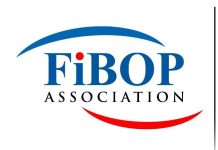The commissioner and chief executive of Accident Investigation Bureau (AIB), Mr. Akin Olateru said on Monday that the agency has so far published a total of 39 final aircraft accident reports and made 154 safety recommendations since its inception in 2007 as part of the Civil Aviation Act of 2006.
Olateru who disclosed this at a media briefing in Lagos during the presentation of four accident and serious incident reports, which occurred in the country between July 2004 and August 2015, said “these safety recommendations have impacted air safety positively not only in Nigeria, but globally.”
The reports released included the accident involving a Bristow Helicopters (Nigeria) Limited Sikorsky S-76C+ helicopter marked 5N-BGD, which occurred on August 12, 2015 in the Oworonshoki area of Lagos; the Pan African Airlines Nigeria Ltd Bell 412 EP Helicopter marked 5N-BDZ, which crashed near SEDCO Energy Platform on July 26, 2004 a few minutes after takeoff.
Also released were reports on two serious incidents involving an Emirates Boeing 777-200 aircraft with the registration number A6-EWD and Aero Contractors Nigeria Ltd B737-42C aircraft with the registration number 5N-BOB, which equally occurred on July 6 and 21, 2015 respectively.
Specifically, he said since he came on board, the agency had released a total of 21 final reports since January 2017 which makes up 52.5 per cent of AIB’s total of 40 final reports released since inception in 2007
The Sikorsky S-76C+ helicopter had crashed into the Oworonshoki lagoon with 12 persons onboard, including two crew members shortly before landing at Murtala Muhammed Airport, Ikeja.
There were six fatalities including the two pilots, while other six persons onboard sustained serious injuries.
The helicopter had departed SEDCO Express oil rig at about 14:55hrs with an endurance of one hour and thirty minutes maintaining 3,000ft with the estimated arrival at Lagos Airport at 15:36hrs, according to the crew information before departure from the rig.
Olateru explained that the helicopter experienced sudden un-commanded pitch up, yaw, and roll for about 12 seconds until it impacted water at about 15:31hrs, stressing that the pilots were neither able to make any form of distress call to Air Traffic Controllers (ATC), SEDCO Express rig or communicate with the passengers before impact.
“Rescue operation was swift, prompt and carried out by local fishermen who were in the area. There were six fatalities, including two crew members and six seriously injured passengers. The crewmembers were recovered the following day. The helicopter was destroyed, but there was no post-impact fire,” he added.
In its sole safety recommendation, AIB advised the Sikorsky Aircraft Corporation to redesign the affected control pushrod assembly by introducing wire lock or lock pins as safety features between the jam nut and the pushrod to enhance better security and safety.
On the accident involving Pan African Airlines Bell 412 EP Helicopter, Olateru stated that the erstwhile Accident Investigation and Prevention Bureau (AIPB) received its notification on July 28, 2004, which was 48 hours after the accident.
AIB in the report noted that the causal factor of the accident could not conclusively be determined but stated that the rostered pilot in command (PIC) was not the pilot flying (PF).
The report stated that the PF was rostered as the pilot monitoring (PM), adding that the crashed helicopter had a valid certificate of airworthiness (COA) at the time of the crash.
In its safety recommendation, like the Bristow Helicopters crash of 2015, AIB issued one recommendation.
It advised the NCAA to ensure that heliport operators provide full weather report for helicopter operations.
On the serious incident involving an Emirates Boeing 777-200 aircraft, AIB emphasised that the aircraft had an impact with another B737-400 aircraft belonging to HAK Air with the registration 5N-BOU.
According to the report, the Emirates aircraft with 285 passengers had requested to take off through the 18R runway, which the ATC replied it was unavailable at the time, but the pilot opted to use the 18Left runway for take-off.\
“The crew asked for when the runway would be available. The tower reported that the time was not determined, but 18L was available. After determining the aircraft take-off performance, the crew accepted to use runway 18L. The Tower advised UAE782 that taxiing via taxiway C for runway 18L would be at pilot’s discretion due to aircraft wing span.
“However, the crew commenced the taxi and impacted a HAK Air Boeing 737-400 aircraft parked at the parking bay of the General Aviation Terminal (GAT), close to holding point runway 18L, at about 21:38hrs, damaging the rudder and the tail area of the HAK Air aircraft, while the Emirates aircraft sustained damage to its right wing tip,” said the report.
AIB made safety recommendations to the Federal Airports Authority of Nigeria (FAAN) and NCAA on the incident.
AIB further released a report on another serious incident involving Aero Contractors aircraft B737-42C and made two safety recommendations to FAAN and the Nigerian Airspace Management Agency (NAMA).
“The purpose of accident investigation, however, is not to apportion blame or liability but to prevent future recurrence of similar incident,” said Olateru.






















































